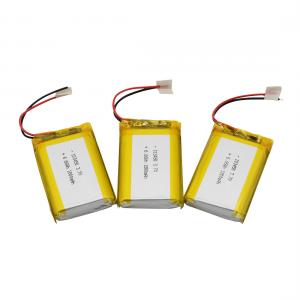الجسم
Batteries are an essential part of a vehicle and should not be overlooked. Without a healthy battery, the car stands still. We are responsible for how long they can support our vehicle. To extend their lifespan, we need to properly maintain them. Maintenance-free batteries are slowly taking over lead-acid batteries but it is important to understand that the basic principle remains the same. We will discuss all the important aspects of a battery in this article.
How does a battery work?
Lead-acid car batteries are energy storing devices made up of lead and lead dioxide plates. These plates are submerged into an electrolyte solution. The percentage of water is 65% and sulphuric acid contributes 35% to this solution. When the battery is used to start the car, it gets discharged. The sulphuric acid in the electrolyte solution gets depleted leaving a higher proportion of water. The sulfate is returned to the acid during the charging process. The battery provides the high current required by the starter motor to crank the engine of the car. Once the engine is started, the battery is again recharged by the engine-driven charging system. In this process, the alternator takes necessary energy from the rotation of the engine through a belt to charge up the battery. When the engine is running, the alternator generates electricity for the electrical equipment of the car.
What makes a battery weak?
When the car is exposed to direct sunlight in summers for longer periods of time, it accelerates the process of corrosion and evaporates the electrolyte. This reduces the life of a battery making it weaker. So, avoid getting your car heated by sunlight by parking in a suitable shade.
A battery must be fitted properly to avoid any sort of vibrations. These vibrations over the time shake the plates around which in turn make the internal connections lose. As a result, the battery would not get properly charged.
Once you start the car, make sure to drive it for enough time for the battery to get recharged again. The alternator takes time to recharge the battery after it has released its energy while starting the engine. Otherwise, the battery will stay undercharged which is not sufficient to provide high current to the starting motor.
Keeping the headlights or music system on while the engine is shut down drains the battery over the time. Avoid plugging in a charger for a longer period of times to prevent the battery from discharging.
Corrosion on battery terminals is as harmful to the battery as anything else. Always clean the battery terminals carefully once or twice in a month. Make sure to wear gloves and eye protection. The white powder on terminals is toxic and should not be allowed to come in contact with the skin.
Signs that indicate battery replacement:
There are a couple of signs that may indicate your battery is getting weak and needs a replacement.
- The bright headlights of the car become slightly dim when the engine is turned off.
- The starter motor turns slowly when you start the car due to the low current provided by the battery.
There are a few visual signs that indicate the battery needs a replacement.
- An internal short circuit or overcharging leads to a swollen battery. If you see signs of bulging anywhere around the battery, replace it.
- Examine the battery case carefully for any damage to the battery case.
How to start an engine with a weak battery?
It is not recommended to use a weak battery. However, in an emergency case, jumper cables can be used when you are stuck during your trip along the roadside. Always keep a set of jumper cables in your car if you think the battery is not in a supreme condition. Jumper cables let you jump start your vehicle with the help of another car. Although it is a very simple technique but safety measures must be taken to avoid any danger. Following steps will guide you to jump-start the vehicle:
- Make sure both batteries have the same voltage rating i.e. 12 V
- Turn off the ignition switch after parking it close enough to the other car in neutral position.
- Never jump a frozen battery. It can easily explode.
- Wear rubber gloves and safety glasses.
- Carefully identify and connect the positive terminals of both batteries to each other.
- Make sure the other end does not touch the car's body to avoid any dangerous spark.
- Clamp the negative cable to the negative terminal of the good battery.
- Connect the other end of the negative cable to a metal part of the car with a weak battery.
- Finally the start the car with the good battery.
- Give it 5-7 minutes to charge the weak battery.
- Now start the ignition of the car with a weak battery.
- Carefully remove the cables in reverse order. Remove the negative cables first followed by removing the positive cable from the car with the good battery. In the end, remove the positive cable from the car with a weak battery.
How to check battery's health?
For proper maintenance of battery, schedule once a month to check the status of the battery. Nowadays there are tools that can help measure the present condition of the battery. Following are the most commonly used tools for this purpose:
Battery load tester:
Battery load tester is used to check the voltage rating of the running battery. It has a display meter with voltage readings up to 16V along with the battery health indicator. It has positive and negative probes. Inside, there is a high current capacity coil which provides the necessary load with a toggle switch. Battery voltage can be tested easily by following these steps:
- Turn off the car engine.
- Connect the positive probe of the load tester with the positive terminal of the battery.
- Similarly, connect the negative probe with the negative terminal.
- Make sure both probes are properly connected with the battery terminals.
- The meter will show a voltage reading in accordance with the health of the battery.
- Now, turn on the load toggle switch for 05-07 seconds to measure the battery voltage on load.
- A healthy battery ideally shows 12.5 volts.
- If the meter needle deflects anywhere near the "weak" indication, immediately replace the battery.
- Safely remove the probes in reverse order.
Hydrometer:
The hydrometer is another tool to measure the battery health. It measures the specific gravity of electrolyte but can only be used on batteries with removable caps. Hydrometers usually have a built-in thermometer. Follow these easy steps to measure the remaining battery life:
- Start with removing caps from the top of the battery.
- Dip the tip of the hydrometer in the first cell of the battery.
- Squeeze and release it from behind to let the electrolyte enter into the cylinder of the hydrometer.
- Read the specific gravity of electrolyte as indicated.
- Note the reading for all cells one by one.
- Make a comparison of readings with those one given on hydrometer.
- Usually, readings between 1.265 and 1.299 indicate towards a charged battery. Any reading under this bracket show signs of a weak battery.
- Another method to examine battery health is to use a multimeter. This process is similar to the one we used for the battery load tester.
How to replace a battery?
A car battery can be easily replaced at home without any complication by following these simple steps:
Removing the old battery:
- Start with removing negative terminal of battery usually marked as black or with (-) symbol to avoid any arcing with the wrench.
- Disconnect the positive terminal usually marked as red or with (+) symbol.
- Remove the "hold down clamp" of battery
- Batteries are heavy in weight so lift it up carefully.
- Clean the battery tray if it is corroded.
Connecting new battery:
- Carefully lift in the new battery in its position.
- Properly connect the "hold down clamp" first.
- Connect the battery terminals in reverse order by connecting the positive terminal first.
- Connect the negative terminal of the battery.
- Make sure the connections are not loose.
- Battery must be fixed properly to avoid any vibrations.
- Terminals must be in a clean condition.
- Add some petroleum jelly on both terminals as it reduces the process of corrosion.
The old battery can be sold to a battery shop from where you have purchased the new one. These car batteries are also recycled to prevent dangerous chemicals from getting into the atmosphere. Old lead plates can also be recycled into various other products.
How to maintain your battery?
To extend the battery life, it should be well maintained. Schedule the maintenance of battery every month. It includes following few things:
Cleaning battery and its terminals:
Cleaning of a battery involves removing the corrosion or any white powder from the terminals and the surface of the battery. For this purpose, use warm water and add a tablespoon of baking soda to it. Carefully remove the battery (as mentioned in replacement section) Make sure the removable caps are properly tight. Always use rubber gloves because the white powder is toxic and should not be allowed to come in contact with the skin. Thoroughly apply the solution over the battery case. Clean the terminals properly. Use a brush to reach narrow spaces. Let the solution for a couple of minutes and then wash it with cold water. The terminals will be corrosion free after this practice. Install the battery back to its position with care.
Inspection of Electrolyte level:
Electrolyte level inside a battery can be examined visually by removing the caps on top of the battery. The lead plates must be dipped properly into the electrolyte solution. If you see a decreased level of electrolyte in any of the cells, add some water into it. Let the solution get mixed properly.
Using a battery charger/maintainer:
If your car is idle for a long period, use a battery charger to keep the battery properly charged. Batteries soon become dead if you don't charge them. A battery charger can be of great help to keep the desired voltage output from the battery. Usually, it comes in different modes as per requirement i.e. charging, boost charging and maintainer. It can also be used to maintain battery voltage. Carefully plug in the charger into a socket. Connect the positive cable with the positive terminal of the battery and negative cable to the negative terminal. Turn on the switch and let the battery charge properly.
Always inspect the battery before leaving on a trip. Overlooking the condition of battery might bring you trouble in the middle of nowhere. A 10-15 minutes inspection might help you save a lot of time during your journey. If you know any other important aspect related to batteries, do mention in the comments section below.














تعليقات